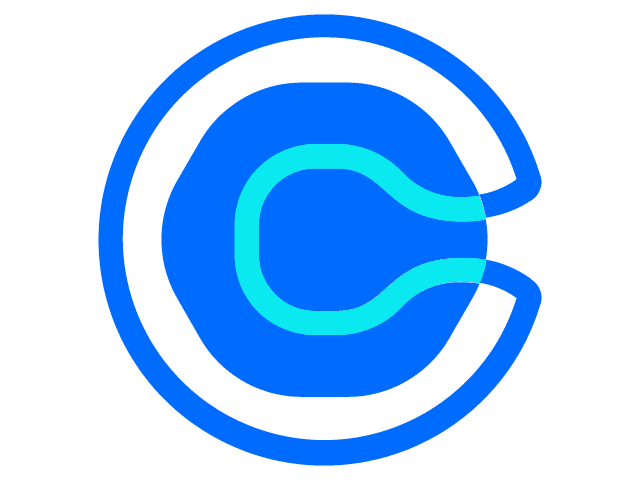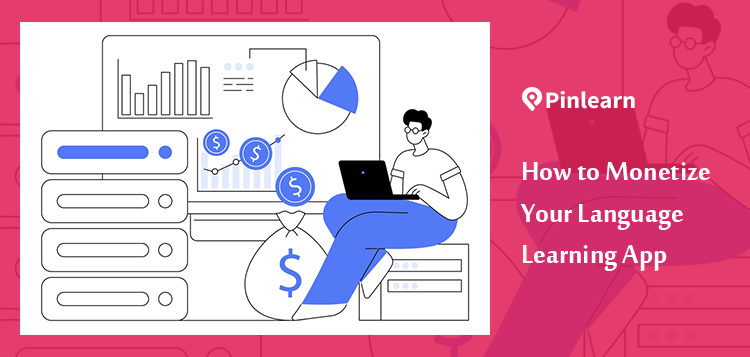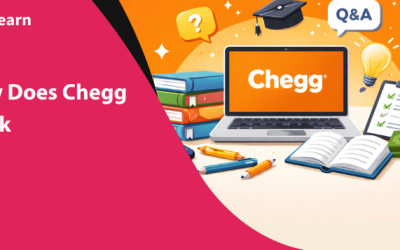How to Monetize a Language Learning App: 6 Proven Models
So are you starting a language learning app?
If yes, you’re stepping into a profitable business. However, success doesn’t revolve around finding the most breakthrough idea, but execution as well!
You also need to think — how you’ll monetize your language learning apps?
After all, money needs to be made, isn’t it? From our years of expertise, we suggest the best revenue models, the steps to choose a monetisation model, and also provide examples.
So, are you ready to churn profits from your language learning app?
TL;DR
- Monetisation extends beyond maximising your ROI — it’s offering the best user experience.
- Freemium model, subscription model, app purchases, ads, partnerships, etc., are the most popular ways to monetise language learning apps.
- The freemium model is the most common revenue model for language learning apps. It’s great for reaching a broad audience.
- Monetising from ads supplements your platform revenue. But use it sparingly, as it hinders UX.
- Don’t monetise your app from a single revenue source. Use a mix of relevant monetisation streams that fit into your business needs.
How Do You Monetize Language Learning Apps: Best Revenue Models
The language learning industry is fiercely expanding, especially after the AI revolution. So, it’s definitely a profitable endeavour to start a language learning app. While you might be the most innovative leader in the language learning industry, prioritise monetisation early.
Monetization is the art of balancing value with driving revenue to your platform.
Here are the top revenue models for language learning apps:
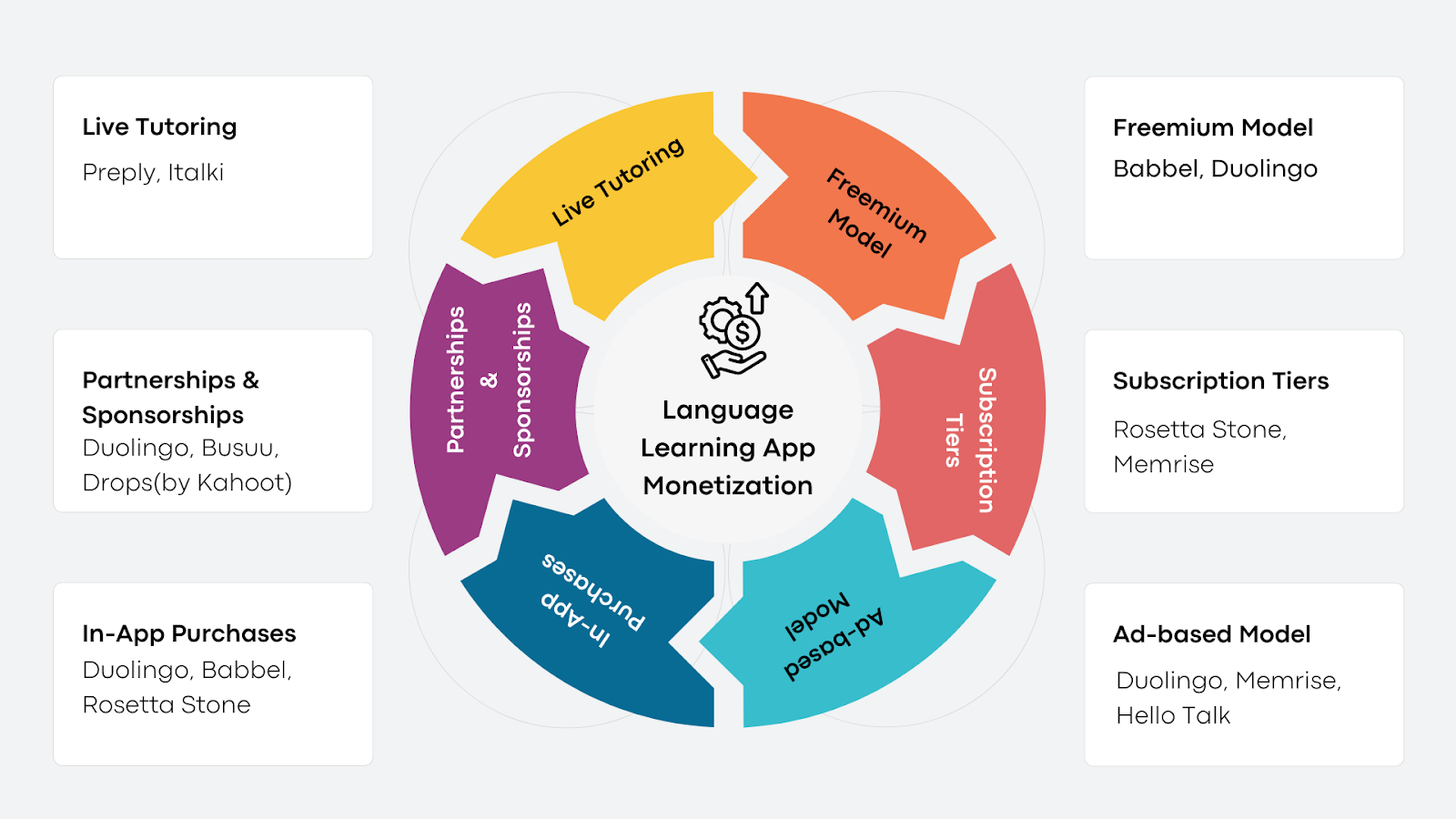
1. Freemium Model
One of the top revenue models for language learning is the freemium model. The most interesting aspect of the freemium approach is that users get to explore the app before purchasing it.
After all, don’t you believe educational resources should be free for all?
While it does serve the larger good, it doesn’t disappoint you revenue-wise.
When users access the basic app for free, it wins trust and credibility. And just when they are glued to your app, nudge them with the premium upgrade! This could be an ad-free experience, offline lessons, or even personalised learning paths.
The two ways to offer a freemium approach: a basic and a premium free trial.
Take the case of Duolingo, which offers basic language learning for free. But learners can unlock the premium features with a subscription. Its premium subscription, called Duolingo Super, includes ad-free access, offline access, progress tracking, etc.
Now, let’s take an example of the limited free trial approach. The super-smart language buddy Babbel rightly implements it. It offers a limited trial of free lessons before committing to its subscriptions.
💡 Learn More: Duolingo Business Model in Education Technology
Pros:
- Attracts a broad audience and is perfect for building your initial audience
- Powerful revenue strategy to enter a new target market
- Low entry barrier and engagement
- Product growth & more upselling opportunities
Cons:
- Low conversions to paid users
- High operational cost for offering free content initially
- Difficult to determine free and paid features
Examples:
2. Subscription Tiers
Looking for predictable revenue from your language learning app?
Set up subscription tiers for your language lessons.
It’s a win-win model: learners get access to regular, updated content. At the same time, businesses get a steady inflow of revenue through recurring subscriptions. You can plan for monthly, yearly, or quarterly subscriptions.
A subscription-based approach is perfect for tutorials or exclusive content regularly. When learners avail themselves of subscriptions, they are obviously going to stick longer! Now, this is a secret tool to slow the much-dreaded churn!
For tiered subscriptions, tailor your tiers based on learner needs and preferences. Create subscription tiers based on your learners’ proficiency.
Here’s an example of a tiered pricing plan:
- Free Tier (“Beginner” for $0) – Limited lessons, basic grammar and vocabulary, in-lesson ads, limited voice-guided features
- Basic Tier (“Intermediate” for $10) – Unlimited daily lessons, in-depth grammar and vocabulary lessons, daily reminders, offline access, no ads.
- Premium Tier (“Mastery” for $20) – All basic features, AI-powered conversational bot, live classes, progress tracking.
Consider learning goals, style, budget, and revenue goals while creating your subscription tiers.
Rosetta Stone plays the subscription approach well. It offers three monthly subscription plans: 6 months, 12 months, and lifetime subscription.
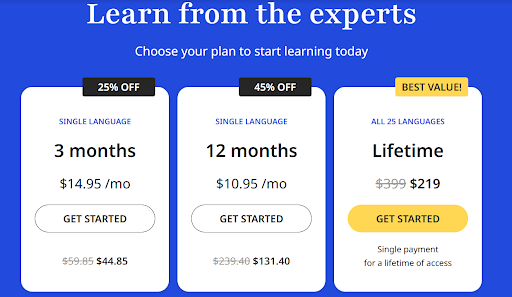
Pros:
- Predictable, steady revenue
- Learners use your platform for longer periods, reducing the churn
- Ideal for continuous learning and habit development
- Increased engagement through ongoing value
Cons:
- Requires platform owners to deliver ongoing value
- Fierce competition from other subscription-based apps
- Users can cancel their subscriptions anytime due to financial strain or quality issues
Example:
3. Ad-based Model
Third-party ads are another way to monetise your language learning app. Show ads for the basic product. And offer an ad-free experience for a premium upgrade.
But, unlike other revenue streams, monetising from ads is tricky.
Hence, you need to know how to play smart!
Add it at strategic places, without hindering the UX experience. Some natural stopping points are between lessons and after completing an exercise. This keeps the learning flow intact and also helps to drive a sizable revenue.
And for those who desire an ad-free experience, they can switch to the premium version.
While choosing ads, ensure they are relevant to your target audience. Banner, full-screen and video reward-based ads are common ad types. These are typically skippable and reward viewers with an in-app benefit.
Partner with ad networks like Google Admob or Meta Audience for ad placement.
For example, Duolingo also monetises from in-app ads placed at strategic points. Duolingo typically places ads after lessons or uses the bottom bar (Duolingo Max). It also promotes its premium subscriptions, Duolingo Max and Super Duolingo, through its ads.
Pros:
- Users get free or low-cost access to content
- Reach a broad audience
- Additional boost to your platform revenue
- Draws in opportunities for strategic collaborations and partnerships
Cons:
- Irrelevant ads interfere with the user experience
- Only a large audience can prove to be profitable
- Ads can easily complement other revenue models like subscription or in-app purchases.
Examples:
4. In-App Purchases
In-app purchases allow monetization beyond subscriptions. Whether it’s a one-off Spanish lesson pack or a gamification upgrade, in-app purchase is a powerful revenue boost.
Learners can enrich learning and carve their own personalized learning paths.
Here are few in-app purchases you can monetise from:
- One-off language packs
- Language proficiency test packs
- Memory card Boosters
- Gamification upgrades like extra lives, streak, chest of gems, etc
- Cosmetic upgrades like avatars, themes, skins, etc.
- Voice AI Feedback module and personalised feedback
- Certifications
- Downloadable guides, translation resources, and cheat sheets
Further, offer these in-app purchases in exchange for virtual currency.
Pros:
- Enriches learning experience and access to premium features
- Offers value beyond subscriptions
- Provides personalised learning paths with customisation and features
Cons:
- Unpredictable revenue, unlike subscriptions or stable revenue streams
- Some users feel pressure to buy the app
- In-app purchases might not always be value-driven or relevant
Examples:
- Duolingo – Streak freeze, hearts fill, language proficiency tests
- Babbel – Language-specific packs, specialised modules
- Rosetta Stone – live tutoring packs, downloadable phrasebooks
5. Partnerships & Sponsorships
Partnership is an attractive model for language learning apps. Collaborate with universities, schools, or content creators. Further, you can even sell your app as part of their language curriculum. This way, you could win a large deal for your app.
Sponsorship is another lucrative monetisation model to broaden your reach. Picture a big brand sponsoring a course, exclusive challenge, or event. The brand exposure is a real boost to your traffic!
Pros:
- Build trust and credibility with strategic collaborations
- Broaden your audience reach with brand exposure
- Easy to attract funding for your platform
- More visibility and greater revenue
Cons:
- Challenging to identify sponsorships that align with brand value
- Landing a partnership or sponsorship is challenging
- More dependence on sponsorships
Examples:
Duolingo, Bussu, Drops (by Kahoot)
6. Live Tutoring
What do Preply, Italki, and Verbling have in common? These apps have proved that live tutoring is an attractive model for language learning.
One-to-one live tutoring from native speakers fluent in their language resembles traditional classrooms. Moreover, the real-time interaction and personalized lessons they offer help to learn languages faster.
Although AI bots provide you real-time feedback on fluency and conversations, human interactions are irreplaceable, ain’t they?
Preply offers one-to-one and group live sessions through subscription or one-time packages. The packages range from 6, 12, or 20 hours. While the subscriptions could be a few hours a week or 28 days.
Different ways to offer live tutoring are:
- Subscription add-on
- Pay-per-session
- In-app purchases
Pros:
- Real-time interaction and feedback that suits language learning
- One-to-one personalised learning sessions
- Flexible and convenient schedules for sessions
- Access to fluent native speakers and cultural insights
Cons:
- Technical glitches can affect the overall learning experience
- Live tutoring sessions could be significantly higher
Examples:
💡 Learn More: Preply Business Model: How Does it Work
How to Choose the Best Monetisation Model?
A solid monetisation model supports long-term growth. Picking the right model is not just about making profits; it’s also about balancing it with user experience.
Consider your goals, user behaviour, and target audience through the process.
Here’s how to pick a monetisation model:
-
Identifying Your App’s Purpose
Before deciding on your business model, consider your app’s purpose. What kind of problem are you trying to solve? Is your target audience K-12 students, professionals, or cultural enthusiasts?
When you have a clear idea of your app’s vision, balancing monetisation with user expectations gets easier.
-
Understanding Your User Behaviour
Delve beyond the mere demographic study of your audience. Use advanced analytics to find which features they use most and the drop-off points. Tools like Google Analytics and Mixpanel reveal data like the most popular pages, bounce rates, and key traffic sources.
-
Perform Competitor Analysis
Study your competitor’s market strategy. Look at their monetisation model, pricing, and revenue they’re pulling in. This helps to find a sweet spot for your language learning app.
-
Consider Scalability
How do you plan to scale within a few years? Probably, diversify into a new market, region or language. Keep in mind your long-term vision while choosing your monetisation strategy.
-
Choose a Monetisation Model
Based on all the above factors, choose the right model. Subscription, freemium or ads? Or a hybrid one involving multiple strategies? What meets your needs better? Evaluate the advantages and disadvantages for each model.
-
Create Feedback Loop
Establish a feedback system by gathering key points from different sources. Combine it with deeper insights from analytics to refine your monetisation approach. Thus, maximize revenue and deliver educational excellence.
Learning From Titans in the Language Learning Industry
Need some real-world inspiration on how language learning apps are churning profits? Let’s learn how popular language learning apps are acing the game!
Duolingo
Duolingo is one of the most popular language learning apps, with a subscription revenue of $748.02 million. One of the top reasons for its astounding revenue is its freemium model.
And learners sure cannot get over its easy and gamified design!
Duolingo offers most language learning content for free, but charges for premium subscriptions.
Most of its revenue comes from Super Duolingo. It offers an ad-free experience, offline classes, unlimited heart, and personalized lessons.
Another premium version of Duolingo is Duolingo Max. It enhances learning with roleplays, conversations with Lily (Duolingo character), and explains my answers.
To sum up, here are Duolingo’s primary revenue streams:
- Paid subscriptions like Super Duolingo and Duolingo Max
- Ads (Free tier)
- Duolingo English Test (DET)
- In-app purchases like unlocking streak freezes, refilling hearts, etc.
- Duolingo for Schools (for teachers and educators)
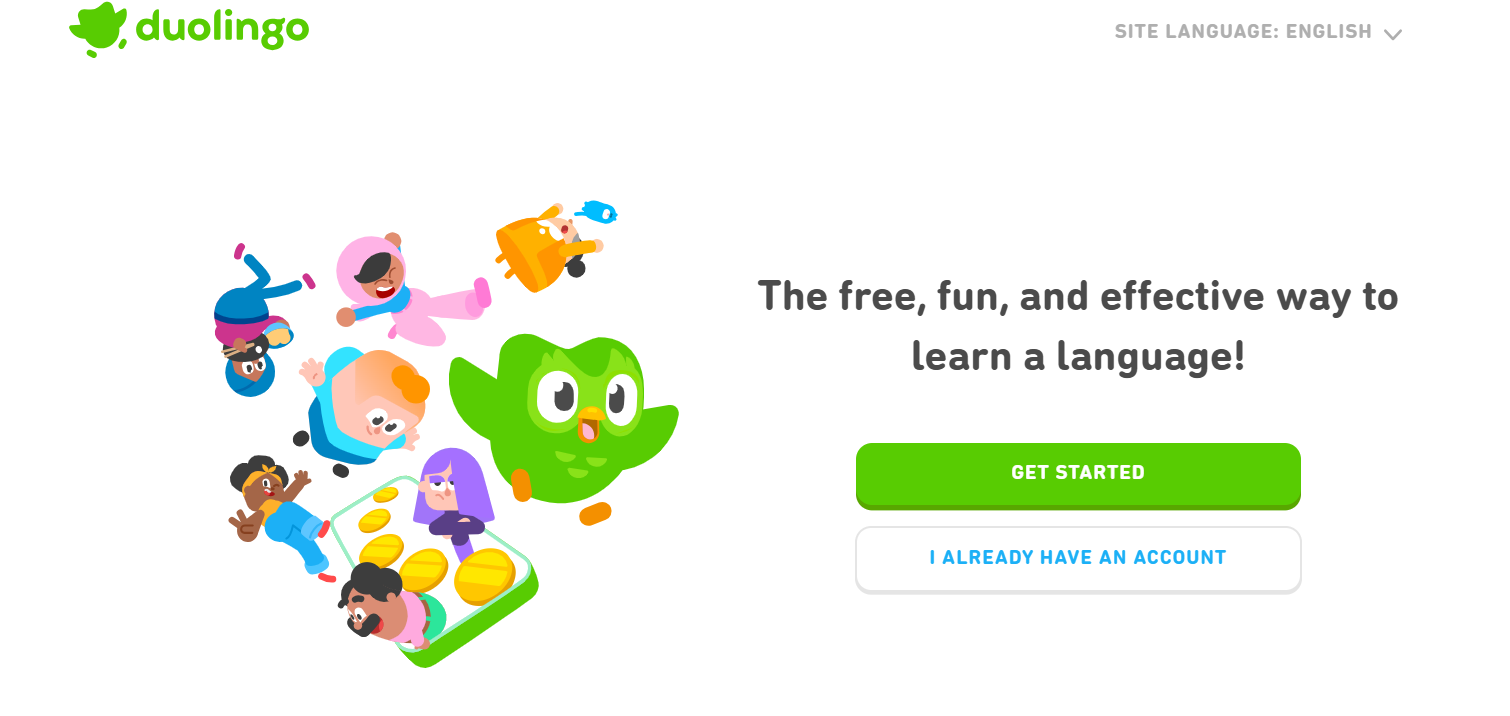
Babbel
Babbel is a language learning app for the minimalists. While it isn’t gamified like Duolingo, it is simple for language beginners. Babbel offers lessons across 14 languages, including French, Spanish, and German, through a self-study app.
Learners can take up the first lesson for free, and thereafter, they need to avail themselves of subscription plans. The subscription plans are catered for single languages or multiple languages.
The single language plan is most popular and is available for 3, 6, and 12 months. Monthly prices start from $12.65 onwards. On the other hand, multi-language subscriptions start from $17.95 per month.
But, Babbel also monetises from a few other revenue streams.
Here’s detailed breakdown of Babbel’s revenue streams:
- Subscriptions plans
- Babbel Live
- Babbel for Business (Corporate learning)
- Advertising
- In-app purchases
- Affiliate commissions
- Educational partnerships
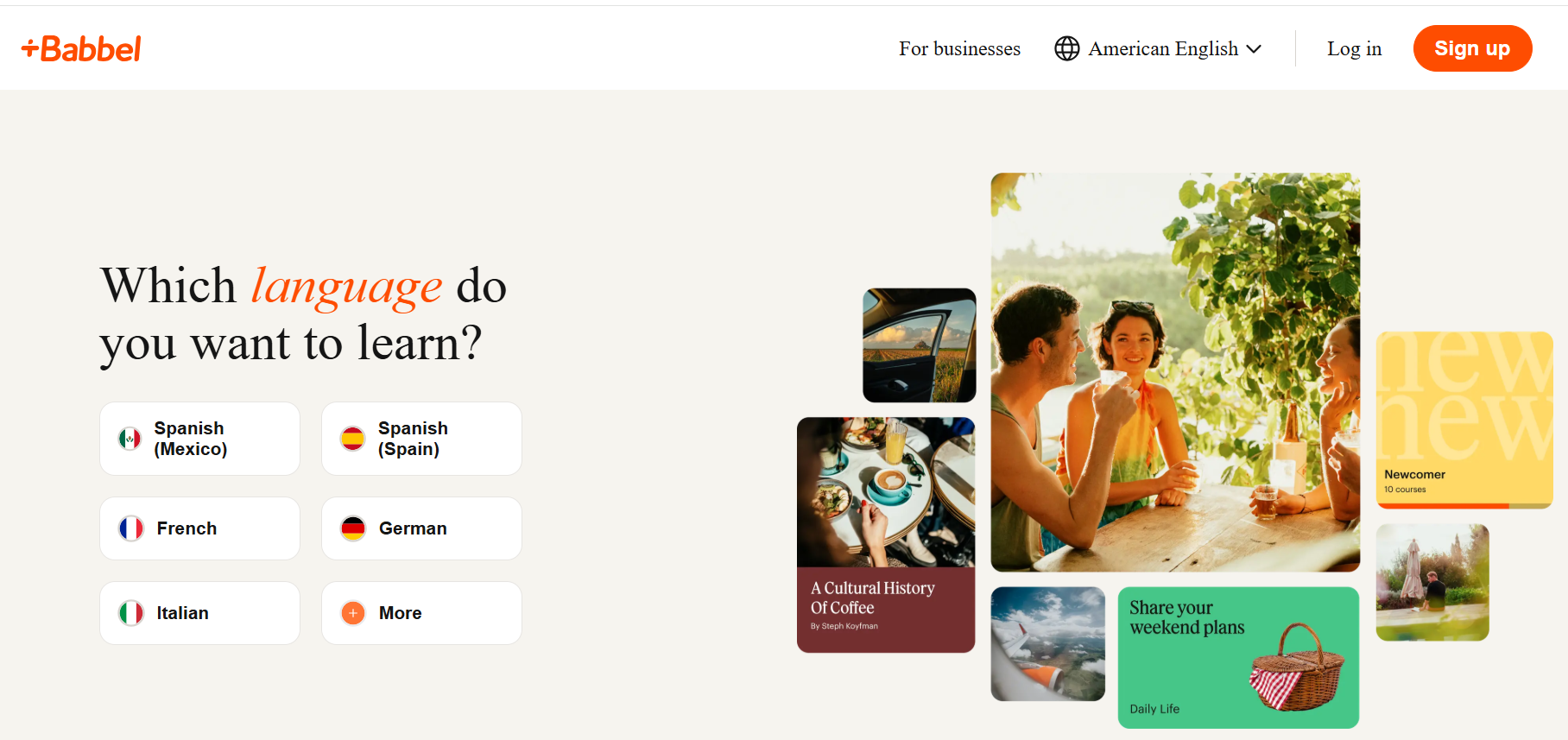
⚡Related:
Conclusion
Choosing the right monetisation model is all about balancing revenue with UX design. There are several monetisation models in the language learning realm.
The right monetisation model isn’t just about adding up profits. You need to deliver ongoing value to platform users. It’s a collective decision, involving multiple aspects like user behaviour and market trends.
Also, relying on a single revenue stream isn’t recommended. Choose one primary monetization model and stack up additional revenue from other sources. Above all, your monetisation model also defines your platform’s overall experience and brand perception!
So, choose wisely before you settle for one!
FAQ-Related to Language Learning App Monetization
1. Is a language learning app profitable?
Yes, owning a language learning app is profitable. The global language learning market was $5.4 billion in 2024 and is expected to reach $14.1 billion by 2030. Top players like Duolingo, Babbel, Preply, and Memrise already have proved the potential of the language learning market.
2. How does Duolingo monetize?
Duolingo is a popular language learning app operating on the freemium model.
A few other revenue streams include:
- Subscriptions
- In-app purchases like chests of gems
- Language proficiency tests
- In-app advertising
- Duolingo Business Solutions
3. How much is the developmental cost to build a language learning app?
The development cost to build a language learning app is approximately $50,000 to $80,000. Factors such as feature complexity, development cost, and platform also impact the development cost.
4. What are ways to monetize language learning apps?
If you’re planning to build a language learning app, you can monetize in different ways. Subscription tiers, in-app purchases, external ads, language tests, and corporate licensing are some key revenue streams.
